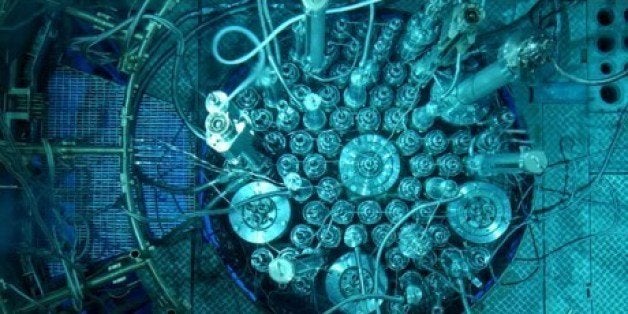
"Too clever by half."
That was a favorite expression of derision from my late colleague Paul Leventhal, a former congressional staffer who helped forge the Nuclear Nonproliferation Act of 1978. He later founded and led the Nuclear Control Institute, a prominent nonproliferation advocacy group, for more than a quarter-century.
Paul reserved his epithet for ideas that purported to promote nuclear security but that in fact would undermine it, either by accident or intention. Were he still alive, Paul undoubtedly would level this criticism at the controversial "Recommendation 4" of a recent report by the National Academy of Sciences (NAS), "Reducing the Use of Highly Enriched Uranium in Civilian Research Reactors."
Indeed, the NAS recommendation is so counter-productive that global leaders should reject it summarily when President Obama hosts the fourth and final biennial Nuclear Security Summit in Washington at the end of this month.
Some context is helpful. Paul spent decades, as have I, trying to eliminate highly enriched uranium (HEU) -- which is suitable for nuclear weapons -- from the fuel used in nuclear research reactors. Recent terrorist attacks in Belgium highlight the danger, as the Islamic State also had targeted a facility in that country that has bomb-grade uranium fuel, according to the New York Times. Most recently, I was commissioned to write a history of the U.S. program to phase out such dangerous fuel, titled "Nuclear Nonproliferation via Coercion and Consensus: The Success and Limits of the RERTR Program (1978-2004)," for a new book, International Cooperation on WMD Nonproliferation (U. of Georgia Press, 2016).
My chapter explains how the U.S. program succeeded in converting the fuel in dozens of reactors worldwide from HEU to low-enriched uranium (LEU), which is unsuitable for weapons because its enrichment is less than 20 percent. In this way, the initiative sharply reduced the risks of both nuclear terrorism and nuclear proliferation. But the case study also reveals that the program faced persistent opposition on multiple fronts.
Prominent opponents included foreign research reactor operators, who initially refused to convert to LEU, and later did so only grudgingly when Washington threatened to cut off their HEU supply. Domestic operators of university reactors likewise resisted complying until the Nuclear Regulatory Commission ordered them to do it in 1986. U.S. national lab officials even sought to kill the LEU fuel-development program to avoid having to convert their own reactors, and the Department of Energy obliged by abandoning the effort in the late 1980s. The orphaned program was then relocated to the Arms Control and Disarmament Agency, but officials there complained that it was crowding out higher-priority programs. So Congress eliminated the program's budget -- until press coverage prompted a partial restoration.
Apparently, the authors of the NAS report were unaware of this long history of bureaucrats and reactor operators trying to avoid conversion to LEU. But they did notice that the U.S. and European programs to develop advanced fuels, necessary to convert high-performance research reactors to LEU, had suffered technical setbacks, postponing conversion for this subset of facilities. Accordingly, the new report recommends -- as an "interim solution" -- converting these reactors instead to HEU of intermediate enrichment, even though such fuel could still be used to make nuclear weapons.
Naively, the NAS report overlooks the obvious dangers of this recommendation. It claims that "By clearly indicating such actions as an interim solution, this approach should in no way hinder or delay qualification of the very high-density LEU fuel" necessary to eliminate use of HEU fuel.
As a professor holding degrees in both physical and political sciences, I would give this assertion the grade of A in Science, but F in Politics. In the real world, implementing the NAS recommendation would have four disastrous consequences for global security:
•First, it would undermine political support for government funding to develop the advanced LEU fuel necessary to eliminate HEU fuel in high-performance reactors. Opponents of LEU conversion would argue (falsely) that intermediate-enrichment HEU provides a sufficient barrier to nuclear terrorism and proliferation.
•Next, it would reduce the likelihood of converting existing high-performance research reactors to advanced LEU fuel, even if such fuel were successfully developed, because operators of these facilities would resist the expense and inconvenience of converting twice.
•Moreover, it would encourage the design of new research reactors based on HEU, rather than LEU as occurs today, because it would legitimize the higher enrichment, intentionally or not.
•Finally, it could perpetuate the use of HEU fuel in naval vessels. In 2015, Congress heroically initiated research and development of alternative LEU fuel for reactors that propel submarines and aircraft carriers. But the U.S. Navy, and its foreign counterparts, might well cite the continued use of HEU in civilian reactors as an excuse to resist converting their own.
Ironically, the NAS report suggests that its recommendation is innovative. In reality, a 1980 UN evaluation contained virtually the identical recommendation, but it was never implemented due to concerns such as those above. When I alerted a veteran U.S. government staffer to the NAS recommendation, he replied pithily: "This just proves that bad ideas never die." Let's hope this one does.
The author is editor of Nuclear Terrorism and Global Security: The Challenge of Phasing out Highly Enriched Uranium (Routledge, 2014).
The views expressed above are the author's own.
This post is part of a blog series produced by The Huffington Post and Carnegie Corporation of New York about issues related to the 2016 Nuclear Security Summit. World leaders will gather in Washington, D.C., on March 31-April 1 to address the threat of nuclear terrorism and steps toward creating a global nuclear-security system to prevent it. To view all of the posts in the series, visit here. Join the conversation on Twitter at @CarnegieCorp, #NGOsummit, #NSS2016.